Student death: how App State communicates after tragic events
Table of Contents:
The Old Way Isn’t Always the Best
Editor’s note: This article explains App State’s protocol for releasing information about student deaths. However, the article discusses mental health and suicide, which may trigger some students. If you or someone you know is struggling, reach out to the Counseling Center at 828-262-3180 or call the National Suicide Hotline at 1-800-273-8255
The 2019 spring semester has not been without the loss of life on App State’s campus. Three students have died.
In the 2014-15 academic year, App State sent out campus-wide emails if a student died. That year, nine students died. In 2013-14, seven. The year before that, eight.
“We just did what we had done before,” Chief Communications Officer Megan Hayes said. “And what that year taught us is that we can’t afford to do that.”
Hayes said the App State communications after a student death are intentional and the university needs to understand the implications of those communications.
During the 2014-15 academic year, App State started to review the policy for when a student dies. That summer, App State created the Student Death Protocol.
The Old Way Isn’t Always the Best
“We got a ton of calls from people saying, ‘Why are you sending me this information?’” Assistant Dean of Students Alan Rasmussen said. “‘You just made my day horrible’ or ‘This just reminded me of my cousin who passed away.’”
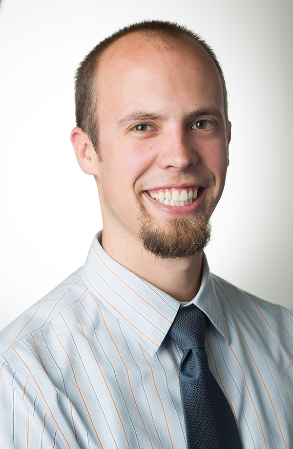
The Dean of Students office received similar calls after campus-wide notifications of a student’s death were sent to students. Rasmussen said students walked into the office crying even if they didn’t have a relationship with the student; they still felt the impact.
The decision to stop sending campus-wide notifications was based on student safety and how App State wanted to remember its students. Another intentional decision Hayes said they made is not stating the cause of death.
“We made a choice to define students by what they contributed in their lives, and that’s how we’re going to talk about the students,” Hayes said. “That was a really important choice for us to make, and we all felt very, very strongly about that when we were developing that protocol.”
Hayes said the only person who can determine the cause of an unattended death in North Carolina is the medical examiner.
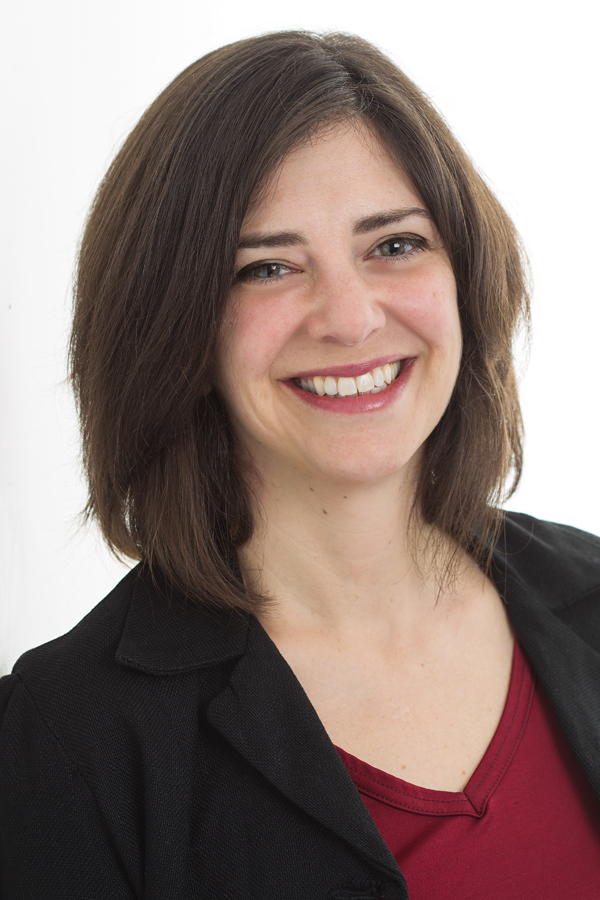
Hayes said that if anybody is in potential danger on campus, they will be alerted immediately.
“Sometimes it might have typos in it because that’s how fast they’re getting it out,” Hayes said. “They care about letting people know immediately.”
When a student dies, the way App State communicates is intentional for safety reasons.
“If a person gets a message about someone that they didn’t know, that can tap into some of that person’s own fears or concerns or own background and life experiences,” Director of the Counseling Center Christopher Hogan said.
Those communications, and media coverage, can lead to an unintentional effect called suicide contagion.
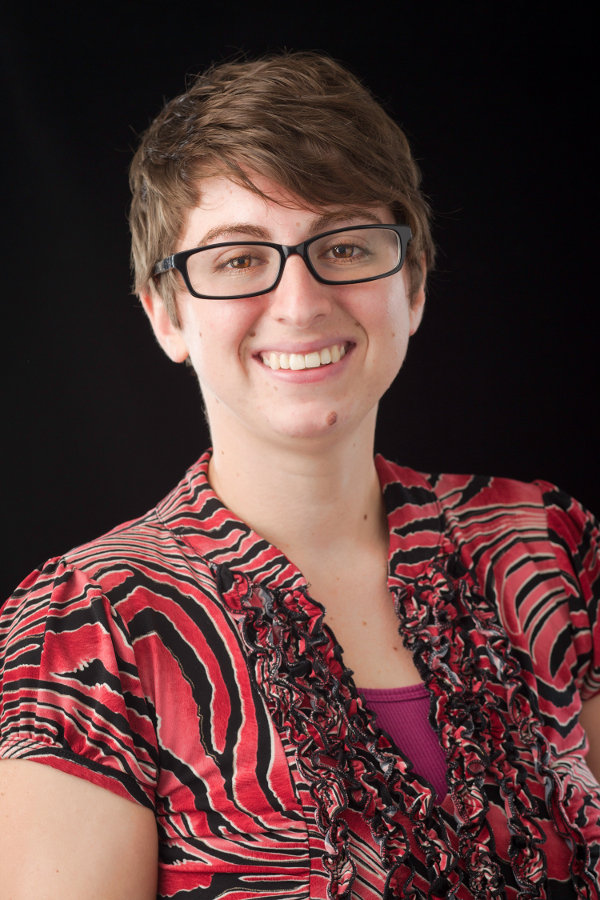
“Suicide contagion, in a nutshell, is when we have a high-profile death by suicide and it’s reported in the media in a glorifying way or a dramatic kind of sensationalized way,” Coordinator for Student Mental Wellness Elisabeth Cavallaro said. “It can then lead to more suicides in that community.”
Cavallaro was part of the team that created the Student Death Protocol. She stressed that suicide contagion affects people with suicidal ideation.
“The memorializing death can be very scary and create a safety risk for those that are actively engaging in suicidal ideation or at risk for suicide themselves,” Rasmussen said. “Any type of death, the memorialization broadcasted can lead to a completion. And that’s the scariest part. That’s what we mean by safety.”
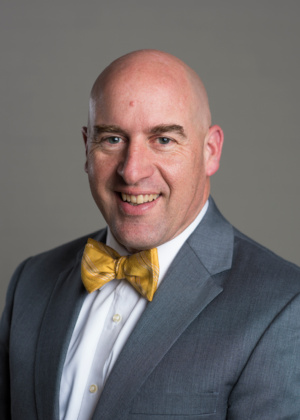
Instead of sending out a campus-wide notification, the university now sends a notification to people who Vice Chancellor for Student Affairs J.J. Brown calls the “ripple effect.”
Those connections could include siblings, roommates, clubs and organizations the student was involved in, and students in their majors.
“That’s a phrase that Megan (Hayes), and other folks, have heard me say for a long time. So what I mean by ripple effect is, what are those connections?
“We pull in the department chair of which they were majoring in because a lot of times, there’s connections, as well and again thinking about the department where that student may know individuals and the faculty in that department.”
The student’s connections are compiled in a Student Postvention Response Team meeting, convened by the Dean of Students Office.
Campus Resources
Providing resources to affected students as soon as possible is part of the Student Death Protocol, but sometimes a student doesn’t need those resources right away.
“It’s really not uncommon for, months later, a student to come in for our initial consultations and say, ‘Yeah, two months ago this person died in my residence hall,’ and they kind of talk about how it’s impacted them,” Hogan said.
Students can go to the Counseling Center for a 20-25 minute initial consultation with a counselor. Afterward, the counselor can share resources with the student that would best suit their needs.
“We’ve tried to have it so that 90% of the students who come in are able to see a counselor at the time that they come in,” Hogan said.
Hogan said the initial consultation service can help students identify resources quickly instead of waiting weeks to schedule an appointment.
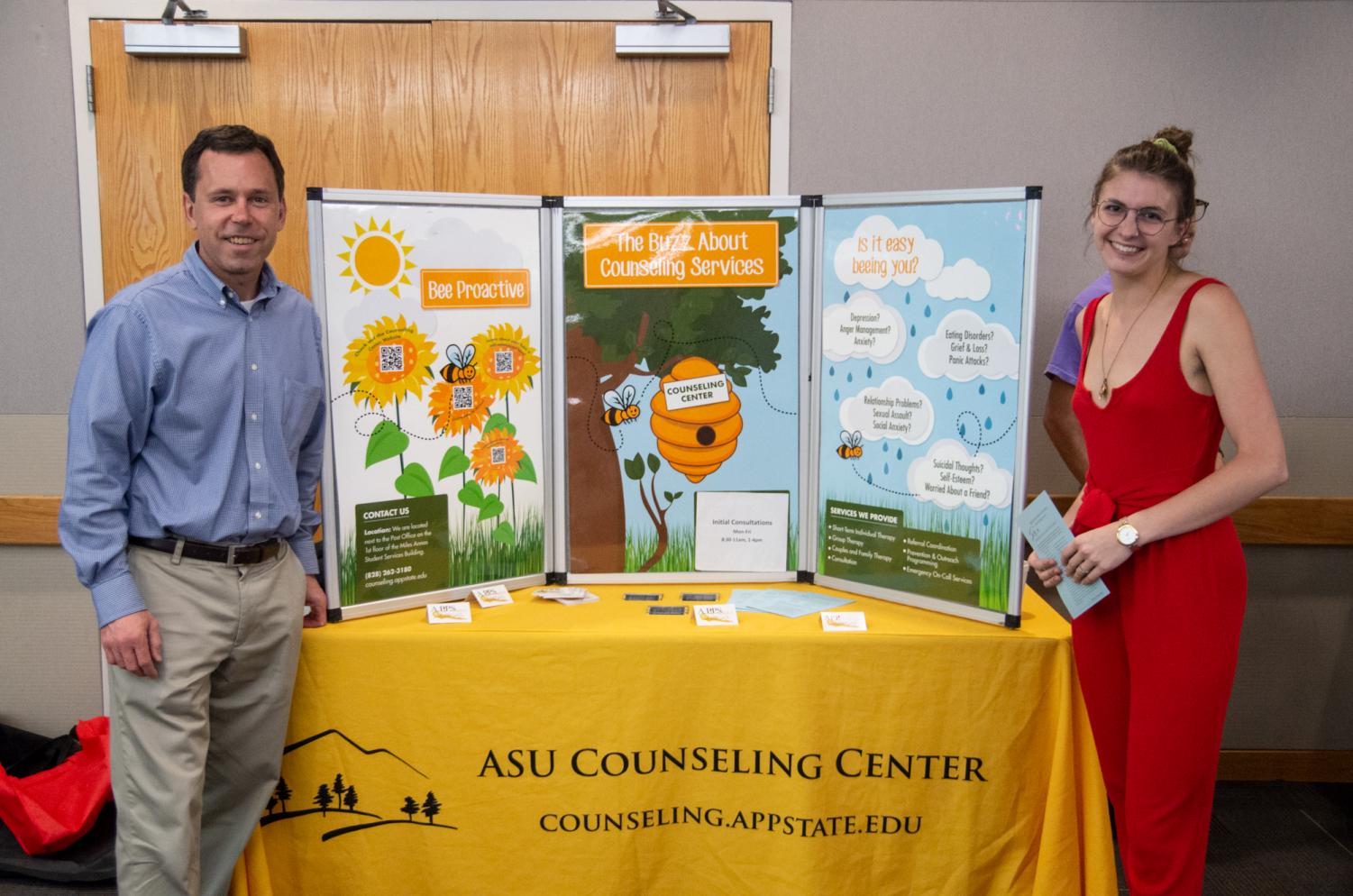
The Counseling Center also implemented single session therapy for students.
“For some students, if they just had one session where they can work intently on one issue, that might meet their needs,” Hogan said.
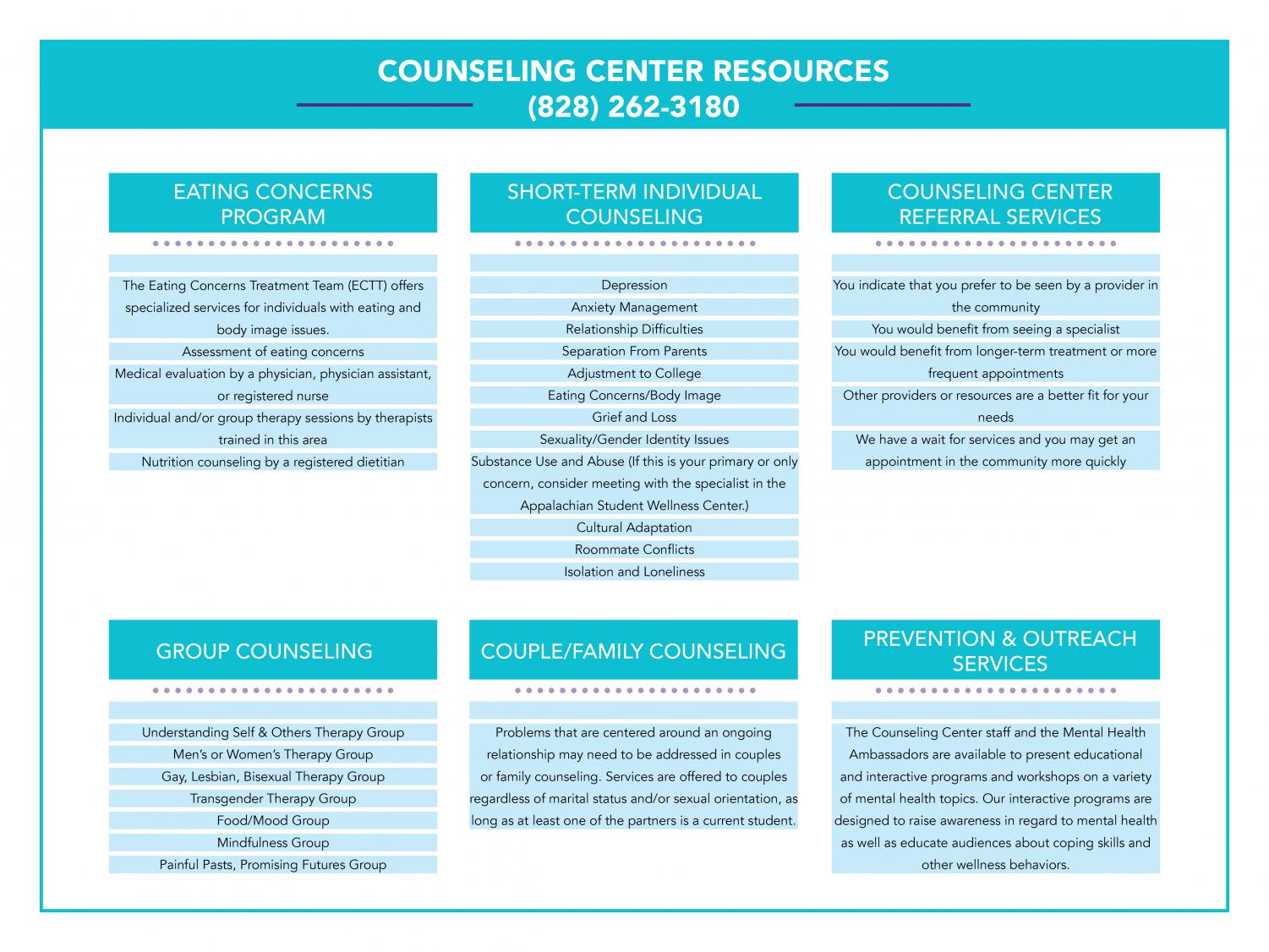
If a student needs help when the Counseling Center is closed, they can call 828-262-3180 and choose to speak with an on-call counselor.
***
The Wellness and Prevention Services mission is to promote healthy behaviors, offer risk behavior modification services and advocate for campus-wide health policies, according to its website.
“The amount of work that’s put into prevention on this campus is just immense,” Hayes said. “(Wellness and Prevention services) understand how to lay this groundwork of support.”
Cavallaro helps coordinate mental health awareness events, teaches a Koru Mindfulness class and works directly with students to connect them with resources.
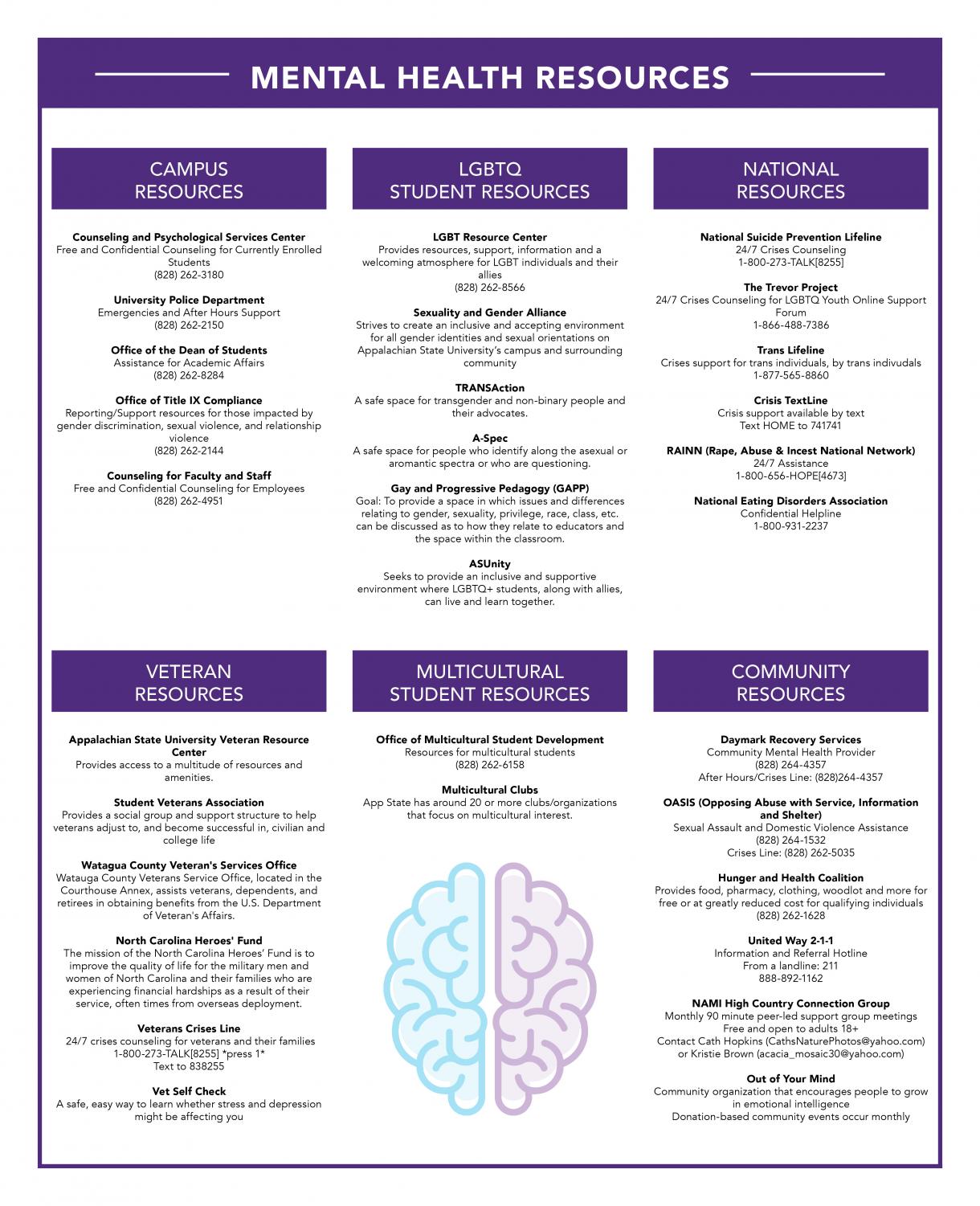
“I would say my favorite part of my job is working with students in all different capacities,” Cavallaro said.
Wellness and Prevention Services also offers online suicide prevention training which teaches:
- Warning signs for suicide
- How to identify someone who needs help
- What to say to someone who is in need of help
- How to refer someone who is experiencing suicidal thoughts to professional mental health resources
The training can be accessed on preventsuicide.appstate.edu and more information about Wellness and Prevention Services can be found on its website, wellness.appstate.edu.
***
The Office of the Dean of Students is a primary contact for students, parents and faculty.
“We try to make sure that parents, faculty, staff and other students know that we’re just kind of a first place to go if you don’t know how to solve a problem and you don’t know exactly what you might need,” Hyde said.
Hyde said the Office of the Dean of Students has connections across campus, which allows the office help students find resources they may not know about.
Another aspect of the dean of students office is the case managers.
Hyde said the case managers work with students to help them strategize for success and help them find resources across campus.
Rasmussen, who is a case manager, said he works with students who are navigating challenges and helps them find resources.
“We just try to open up doors to make the system all the easier,” Rasmussen said.
Students Affected by Death
By the time Mary Carver Deal graduated high school, four of her friends had died by suicide.
“When I was a sophomore in high school, one of my really close guy friends committed suicide, and then by the time I graduated high school, a total of four of my friends committed suicide,” Deal said.
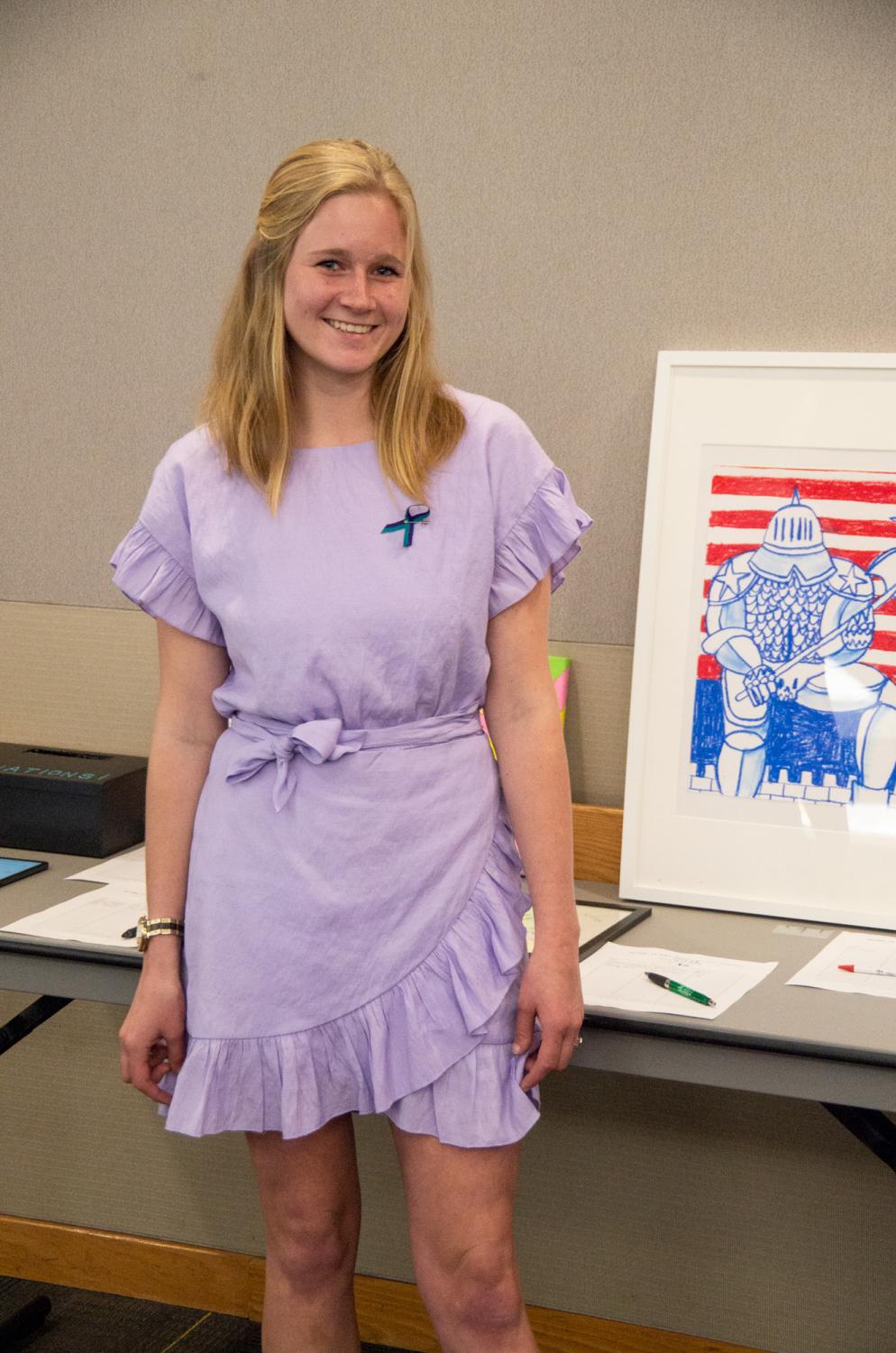
Deal, sophomore art and visual culture major, said she became the person people could talk to if they were feeling depressed or sad.
She started an art show fundraiser that raised money for different memorials and said she spent most of high school raising awareness for mental health.
When she got to App State, Deal said her mental health declined.
“When I got to college I kind of flipped my perspective, I guess because I went from being the person you talked to about depression to being one of the most depressed people you could talk to,” Deal said.
During that time, Deal said she couldn’t go to classes.
“All these things were just happening at one time, and I remember sitting there and telling my mom like, ‘Mom I didn’t understand what all of them went through until right now,’” Deal said.
Deal said she was sitting in her room one day when she realized that her mom, her brother, the Counseling Center and the Dean of Students were all trying to help her.
She realized she had to help herself get out of that mindset.
Deal said she started keeping herself busy by rushing a sorority and participating in community service.
“I’d volunteer for Operation Christmas Child, the Hunger and Health Coalition…just to kind of keep myself busy and try to do something positive,” Deal said. “My thought was, ‘If I do something positive, then I’ll feel better.’”
She also said she made herself wake up earlier and started hanging out with people instead of keeping to herself.
“Eventually, I got to the point where me pretending to be happy every day was me actually being happy,” Deal said.
She started to get more involved in mental health wellness during the 2019 spring semester by helping organize an art auction for the Bridge of Hope Banquet.
***
Junior Brandon Southard started the Whitaker Fund, with the Counseling Center and the Office of Financial Aid, for students who can’t afford off-campus counseling services.
The fund started after Southard talked with Hogan about what students need. When Hogan shared statistics with Southard about how many students come through the Counseling Center, it stuck with him.
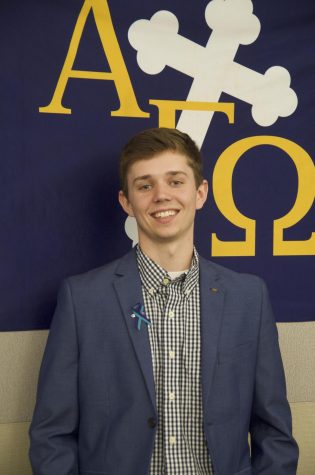
Brandon Southard stands next to the Alpha Gamma Omega flag during the Bridge of Hope Banquet which raised money for the Whitaker Fund.
Southard, religious studies major, said it hurt him that so many people struggled with mental health.
In the 2017-18 academic year, 2,565 students visited the Counseling Center.
The name of the fund has special meaning to Southard.
“Part of my story is that my mom committed suicide when I was a freshman in high school,” Southard said. “That sucked and hurt, but I wanted to be able to make a positive out of that.”
Southard wanted to honor his mom some way, and when trying to find a name for the fund, he talked to Hogan.
“My mom, when she was a Whitaker—her maiden name—that was when she seemed the happiest in her life,” Southard said. “It’s specific to a time in her life when she was happy.”
Last year his fraternity,, raised $1,400 for the fund in the Bridge of Hope Banquet. In 2019, the fundraiser took place on April 13 and the money was raised by auctioning student artwork, which Deal helped organize.
***
On March 30, students and community members participated in the fifth Out of Darkness: Suicide Prevention Walk on App State’s campus.
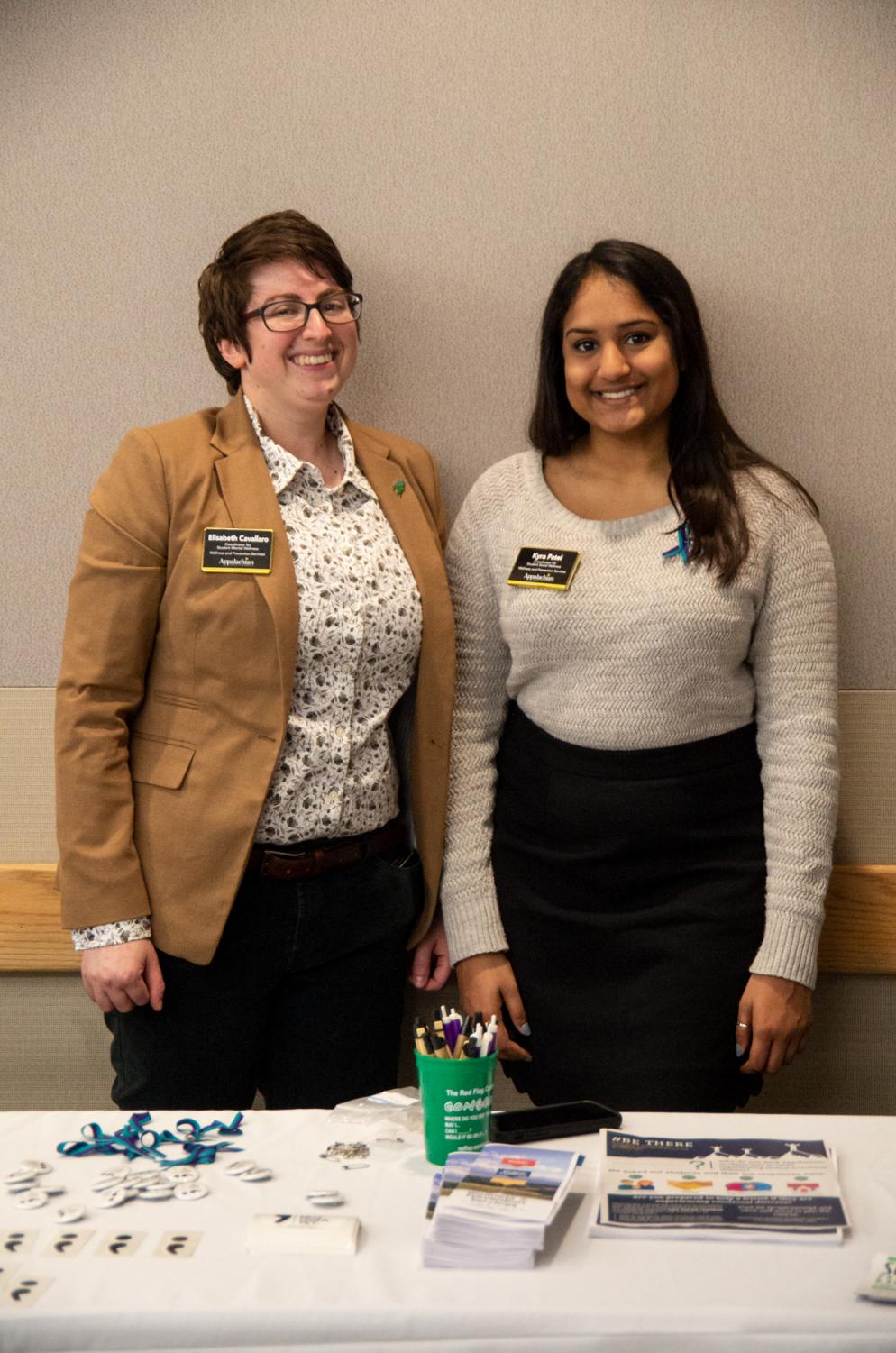
Coordinator for Student Mental Wellness Elisabeth Cavallaro and Coordinator for Student Social Wellness Kyra Patel pose at the Wellness and Prevention Services table during a fundraiser. Cavallaro helped create the Student Death Protocol after the 2014-15 academic year.
Frank Batts, sophomore biology major, said the walk means a lot to him because his brother died by suicide when he was in high school.
Batts worked with Cavallaro to organize the March 30 walk. His sister-in-law organizes the same walk in Surf City where he is from.
The walk raises money for the American Society for Suicide Prevention, which “raises awareness, funds scientific research and provides resources and aid to those affected by suicide,” according to its website.
Before the walk, participants met and had a small ceremony.
“There’s a bead ceremony where you wear the color of the bead of the situation you’re in,” Batts said.
The different colors represent:
- Orange – Lost a Sibling.
- Purple – Lost a Relative or Friend.
- Silver – Lost First Responder / Military.
- Green – Struggled Personally.
- Blue – Support the Cause.
- Teal – Friends and Family of Someone Who Struggles.
The walked raised $2,348 in 2019.
***
Southard is part of the App State Police cadet program and will participate in the police academy in summer 2019.
“I just want to help people and I think that the drive to help people wouldn’t be where it is today,” Southard said. “It really grew from my own loss because no one should have to struggle with that and no one should ever feel like that is their solution. It’s impacted me greatly, and it’s really made me who I am.”
Southard also said he became more involved with his church and started playing guitar for his church band after his mom died.
“When I was really in that low place, I would start playing the guitar,” Southard said. “I turned it into some creative energy if I was just sitting there kind of down on myself and really feeling sad.”
After her friends died in high school, Deal helped raise awareness for suicide prevention.
When her mental health was declining when she started college, she had this advice for anyone who has a friend going through a mental health crisis.
“Actions speak louder than words,” Deal said. “Ask them to hang out. The best thing that got me through it was just leaving my house trying to go out and do things.”
Batts also said getting out of his house helped him after his brother died.
“Reach out to friends, because the worst part about it is being alone,” Batts said. “That’s when the thoughts really get into your head.”
Moving Forward
Hayes said other institutions called her, saying they were in similar positions as App State was in the 2014-15 academic year. They would ask how App State got to where it is now and what advice it could give them.
In 2015-16, Hayes said Chancellor Sheri Everts got an email from a former student working at a university in Hawaii. She told the chancellor her university was looking at the Student Death Protocol as a model for how to communicate in the future.
Brown said people in Student Affairs have shared the protocol with other campuses.
Brown said he knows what it’s like to lose someone close while in college. He said his dad became terminally ill when Brown went to college and those who helped him motivate him now.
“I almost quit school when my dad got sick and I didn’t, and it’s because people at the institution, my academic adviser, folks in student affairs that kept me in school and helped me navigate kind of a challenging time,” Brown said.
Brown said another one of his biggest motivations is helping students through challenges so they can graduate and “live out those dreams.”
For Rasmussen, said he hopes the intentionality of the protocol is a better approach than it was in the past.
“My hope is that the policy is providing resources and support to those that really need help during a very tragic and difficult time, but in the safest way possible in that regard,” Rasmussen said.

If you or someone you know may be struggling with suicidal thoughts, you can call the U.S. National Suicide Prevention Lifeline at 800-273-TALK (8255) any time of day or night or chat online.
We hope you appreciate this article! Before you move on, our student staff wanted to ask if you would consider supporting The Appalachian's award-winning journalism.
We receive funding from the university, which helps us to compensate our students for the work they do for The Appalachian. However, the bulk of our operational expenses — from printing and website hosting to training and entering our work into competitions — is dependent upon advertising revenue and donations. We cannot exist without the financial and educational support of our fellow departments on campus, our local and regional businesses, and donations of money and time from alumni, parents, subscribers and friends.
Our journalism is produced to serve the public interest, both on campus and within the community. From anywhere in the world, readers can access our paywall-free journalism, through our website, through our email newsletter, and through our social media channels. Our supporters help to keep us editorially independent, user-friendly, and accessible to everyone.
If you can, please consider supporting us with a financial gift from $10. We appreciate your consideration and support of student journalism at Appalachian State University. If you prefer to make a tax-deductible donation, or if you would prefer to make a recurring monthly gift, please give to The Appalachian Student News Fund through the university here: https://www.givecampus.com/campaigns/54088/donations/new?designation_id=faa93386&
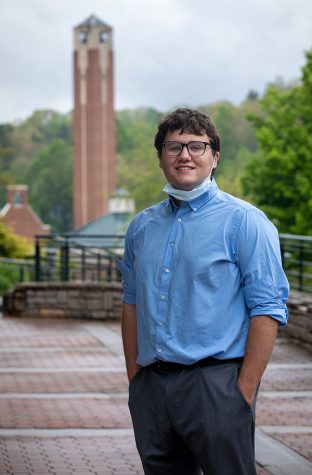
Moss Brennan (he/him) is a senior journalism major with a minor in political science and media studies. He has worked on The Appalachian since freshman...
